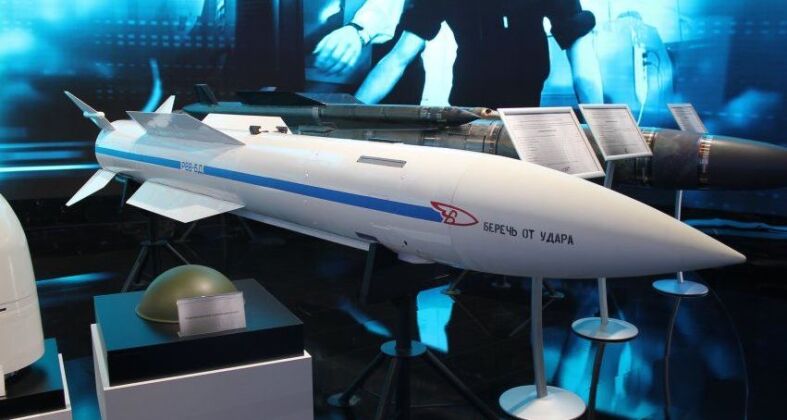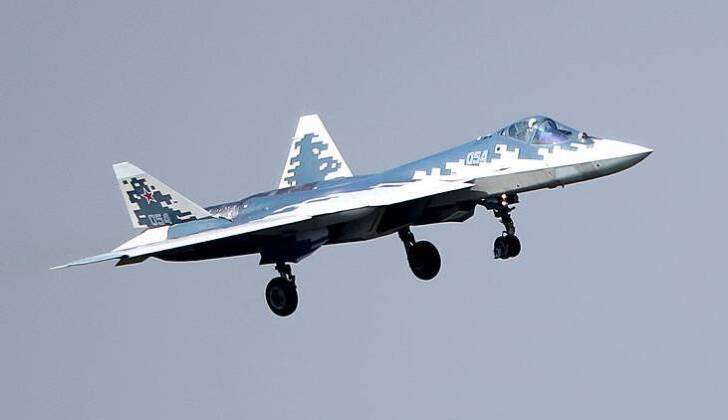News
World’s Longest Ranged Air to Air Missile Performing Well in Ukraine: Fifth Gen. Su-57s Responsible For Launches
Russian state media outlet Sputnik has provided insight into the performance of one of the country’s newest and most capable anti aircraft assets in the ongoing Russian-Ukrainian War, the R-37M air to air missile, the capabilities of which have increasingly been highlighted as a leading threat by Ukrainian and Western sources since 2022. The oversized missile was designed for the Russian Air Force’s MiG-31BM and MiG-31BSM interceptors, which are by far the world’s largest aircraft in the world built for air to air combat and carry the largest sensors of any fighter/interceptor in the world. This makes them well suited to carrying the very long ranged munitions. R-37Ms have more recently been used to equip units of Su-35 and Su-57 fighters, although these aircraft’s carrying capacity and maximum firing altitude are both significantly lower than those of the MiG-31. The missile itself Is prized for its very long 400km range, large 60kg warhead, and Mach 6 speed. This has provided a strong edge over the U.S. Air Force’s top air to air missile the AIM-120D, which although much smaller and better suited to fighter sized aircraft, has a much more modest 160km range, 20kg warhead and Mach 4.5 speed.

Regarding R-37M operations in Ukraine, an anonymous source cited by Sputnik reported: “The R-37M missile has demonstrated the greatest efficiency during the special military operation. When the missile was used, the probability of hitting targets close to one was recorded – that is, one missile is enough for one Ukrainian military aircraft.” Regarding the range of targets, it observed “R-37M missiles have shot down Ukrainian Su-27 and MiG-29 fighters, Su-25 attack aircraft, Su-24M front-line bombers, low-flying helicopters and various drones, including Bayraktars.” Although Western sources have widely highlighted the strong impact of the R-37M on the battlespace since November, which marked the combat debut of the MiG-31 in an air to air role, it was perhaps more notable that the Su-57 next generation fighter was reported Sputnik’s source to be employing the missiles as well. “At the same time, the missile has demonstrated high efficiency in hitting targets, maneuvering with a large overload,” the source added.

Although only 10 Su-57s are currently in service in the Russian Air Force, the fighter class has been deployed for a much wider range of roles than any other fighter from its generation and is the only post fourth generation fighter to have participated in a major war against a state actor. The aircraft was initially reported to be engaging in strike and later air defence suppression missions, likely using Kh-59MK2 and Kh-31 cruise missiles, although reports emerged from October 2022 that the class had been involved anti aircraft operations. Specifically, a Ukrainian Su-27 fighter and possibly a Su-24 strike fighter were reported to have been shot down by Su-57s at an extreme range of 217km after carrying out a strike on Russia’s Belgorod region. This report was supported by a later report in January 2023 by the British Defence Ministry that Su-57s were “launching long range air to surface or air to air missiles into Ukraine,” with this serving as the first Western confirmation that the fighters were indeed involved in operations and had been “since at least June 2022.” The language used, launching missiles “into Ukraine” from long standoff ranges, may have hinted at a very long range missile – with the R-37M being the only one with a range sufficient to gain kills against targets over 200km away.
Subsequently the British conservative outlet The Conversation reported in mid-February that “The Russian MiG-31 and Su-57 operating the R-37M long range hypersonic missile have engaged Ukrainian aircraft at a range of over 200kms from the safety of Russian airspace,” providing the clearest report of how the new Russian fighters were contributing to anti aircraft operations. The Su-57 is thus the only fifth generation fighter to have seen air to air combat against enemy fighters, and moreover appears likely to have done so against relatively high end fourth generation fighters such as Su-27s.












